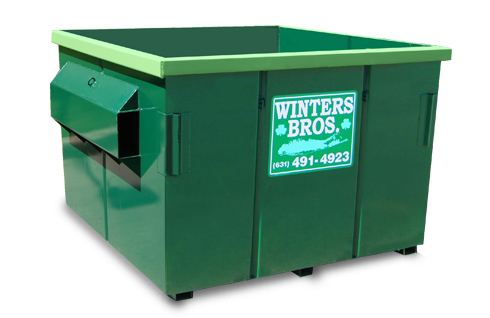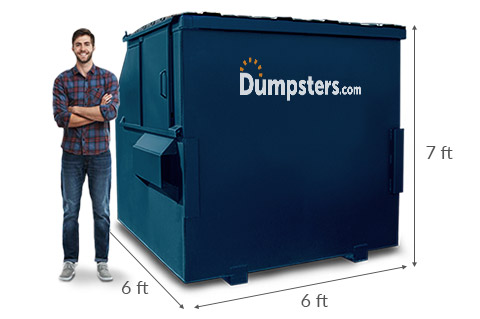To rent a dumpster, you'll need to consider numerous essential variables to assure a smooth and effective waste administration experience. Begin by recognizing local regulations, consisting of license requirements and waste disposal limitations, then choose the right dumpster size based on https://piedmonttriaddumpsters.com/blog/ your project's needs, thinking about elements like waste volume and material kind. Prepare the delivery location by removing obstacles and assuring a level, degree surface area, and supply essential info concerning your project, rental period, and site-specific demands. Finally, thoroughly evaluation and authorize a rental agreement that outlines terms, charges, and obligations. By covering these bases, you'll be well-prepared for a successful dumpster rental experience, and discovering even more will certainly expose a lot more necessary information to keep in mind.
Dumpster Rental Basics
The rental process typically involves choosing the wanted dumpster size, arranging a delivery date, and defining the rental period.
Once the dumpster is provided, clients can fill it with waste, and the rental firm will certainly manage the disposal process. This easy technique makes it possible for people and businesses to focus on their core tasks while ensuring liable waste management

Dumpster rental solutions usually include versatile rental periods, competitive pricing, and convenient scheduling options.

Understanding Neighborhood Regulations
With dumpster rental services simplifying waste elimination, it's equally vital to consider the governing structure regulating garbage disposal in your location. Understanding regional guidelines ensures a seamless and compliant waste management process.
Permit Requirements: Talk to your city government to determine if you need an authorization to put a dumpster on your residential property. Some districts need licenses for dumpsters going beyond a certain dimension or for dumpsters put on public streets.
Waste Disposal Restrictions: Familiarize yourself with local policies regulating the types of waste that can be thrown away in a dumpster. Particular materials like hazardous waste, electronic devices, or building materials might be prohibited or call for special handling.
Placement and Storage: Understand local policies pertaining to dumpster placement, consisting of closeness to sidewalks, streets, and neighboring properties.
Confirm you adhere to storage requirements, such as covering the dumpster in the evening or throughout non-operational hours.
Choosing the Right Dumpster Size
Frequently, house owners and specialists alike ignore the value of choosing an appropriately sized dumpster, only to locate themselves dealing with unneeded logistical difficulties down the line.
A dumpster that is too little can bring about costly overages and multiple journeys to the landfill, while one that is as well large can lead to squandered room and unnecessary expense.
To avoid these issues, it's vital to estimate the quantity of waste you expect to generate Think about the size of your project, the sort of products being taken care of, and the weight of the debris.
Most dumpster rental business supply a range of sizes, usually ranging from 10 to 40 cubic backyards. A 10-yard dumpster is suitable for small cleanouts and DIY projects, while a 40-yard dumpster is much better matched for large building and construction projects or commercial renovations.
Be certain to consult with your rental business if you're not sure about the size you need, as they can supply support based upon your details requirements.
Preparing the Distribution Location
Clear the means for a seamless dumpster delivery by preparing the drop-off location in advance.
A well-prepared website assures the distribution procedure goes smoothly and efficiently, conserving you time and hassle.
Before the dumpster shows up, take a couple of minutes to:
Clear the area of obstacles: Move any kind of automobiles, tools, or particles that may be in the way of the shipment location.
Check for low-hanging cables or branches: Determine there are no overhead obstructions that can interfere with the dumpster's placement.
Designate a certain drop-off location: Recognize a flat, level surface area where the dumpster can be safely placed.
Providing Essential Information
Once the delivery location is prepared, focus transforms to supplying the necessary information to guarantee a successful dumpster rental experience
This includes sharing details concerning the task, such as the type and quantity of waste to be taken care of, the duration of the rental period, and any type of details demands or limitations at the site.
Be prepared to offer your contact information, including your name, phone number, and email address, so the rental company can remain in touch throughout the process.
You might additionally be inquired about the type of products you plan to deal with, as some items, like hazardous waste or hefty materials, might call for special delivery or extra fees.
Accurately giving this details identifies the rental business can deliver the appropriate dimension and sort of dumpster for your needs, and that you know any type of specific regulations or guidelines that apply to your project.
Signing a Rental Agreement
With the needed info provided, the rental company will usually call for an authorized rental contract to strengthen the terms of the dumpster rental.
This agreement warranties that both celebrations are clear on the rental period, dumpster size, and any type of extra services or fees.
Before signing, review the arrangement carefully to verify you recognize the adhering to bottom line:
Rental duration: The length of time you can maintain the dumpster on-site.
Fees and charges: Any type of additional expenses past the preliminary rental cost, such as excess charges or late fees.
Responsibilities: That is accountable for problems or crashes including the dumpster.